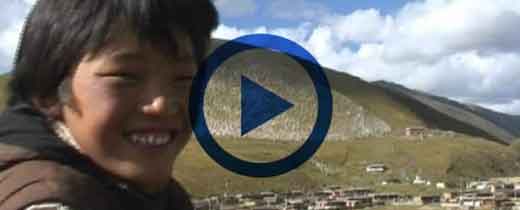Lhunze County, also known as “Lhuntse County“, is a county under Shannan City. In Tibetan, it means “everything goes well, and strength is strong“, which was called “Nye” in ancient times.
Location
It is located in south of Shannan City, at northern foot of eastern Himalayas. It borders Nang County and Gyaca County to north, Medog County to east, Comai County to west, Cona County to southwest, Qusum County to north, Nedong District to northwest, and Mainling County to northeast .
The total area of Lhunze County is 10,566 square kilometers, and the actual control area is 8,165 square kilometers. The county seat is Lhunze Town at an altitude of 4236 meters, about 302 kilometers from Lhasa City, 144 kilometers from Tsetang Town, and 239 kilometers from Lhasa Gonggar Airport
Best time to travel
From June to October
Local climate
Plateau temperate continental monsoon climate
Most popular sites
San’an Qulin Monastery, also known as “Sangak Choling Monastery“, is located in the northeast of Longzi Town. The monastery is 3250 meters above sea level. It was founded in 1515 AD and belongs to Pazhuo Kagyu of Tibetan Buddhism.
Zhongga Chode Monastery, also known as “Dzongka Chode Monastery“, located in Ridang Town of Lhunze County. It was a Bon religion monastery during Tubo period. And then converted to Kadam Sect monastery in 11th to 13th centuries, and finally it was converted to be a Gelug pa monastery after 15th century
Geography and climate
Lhunze County belongs to southern Tibet valley at northern foot of Himalayas. Due to influence of Tertiary Himalaya orogenic movement, the terrain has been undulating, Mountains and rivers crisscross.
Its terrain is high in north & west, and low in south & east. There are high mountains and ridges with an altitude of 6000 meters, and there are also mountains and valleys that slope down to 3000 meters.
The lowest points are Zhuangna Village and Douyu Village, with an altitude of 3000 meters. The main peaks in south are located in the large “arc” of Himalayas. The elevation is generally above 5,000 meters. Ice moraine is visible, ice towers are lined, and snow covers the mountains all year round.
In the middle and upper reaches of mountainous area of Xiong Chu River, the altitude is generally between 3900 meters and 4300 meters, the river beaches are relatively wide, and the relative height difference between valleys and mountains is generally between 300-800 meters, which are formed by stepped land.
The alpine valleys in the lower reaches of Se Chu, He Chu, and Xiong Chu generally have an altitude of 3000-3600 meters. The rivers in this area are deep, mostly in form of V-shaped valleys, and gullies are developed. There are alluvial fan plains of varying sizes in gullies and tributaries.
Annual average temperature in Lhunze County is 5.5°C, annual precipitation is 297 mm, and annual frost-free period is 238 days. Annual average sunshine hours is 3006 hours.
The rivers in Lhunze County belong to Xiong Chu River. There are 41 long-term tributaries in alpine valleys, of which 5 rivers have an area of 100 square kilometers.
There are 65 large and small lakes in this county, with a total area of 33 square kilometers. The largest Xindelie Lake is more than 760 acres, followed by Neizong tso which is more than 420 acres.
Population and ethnicity
As of end of 2017, the total population of Lhunze County was 36,000, of which Tibetan population accounted for 92% of total population, in addition to Han, Mongolian, Hui, Monba and other ethnic groups
Brief History
During Tubo kingdom, Lhunze area was under jurisdiction of “Yue Ru“, A Qianhu households was set up, which was called “Dongben” in Tibetan.
During Yuan Dynasty(AD 1271-AD 1368), it was under jurisdiction of Zhayou Wanhu, which was formed by Jiayu and Lazhu of Lhunze area.
During Ming Dynasty(AD 1368-AD 1644), Lhunze area belonged to Youwanhu, and it was listed as one of the 6 first class Zong of Shannan during Kashag regime
Before 1950, Lhunze Zong was directly under jurisdiction of Shannan Jiqiao.
In 1956, Lhunze Zong Office was established
In 1959, Lhunze Zong and Jiayu Xika were merged to form Lhunze County, which was under jurisdiction of Shannan Prefecture
In 2016, Shannan Prefecture was abolished, and prefecture-level Shannan City was established, and Lhunze County was under jurisdiction of Shannan City.




